On Sunday June 9th, 2019, Hong Kong saw a mass protest of over a million people demonstrating against a proposed law that would allow extradition to Mainland China. For a city of 7.5 million people, a million protesters is an enormous turnout.
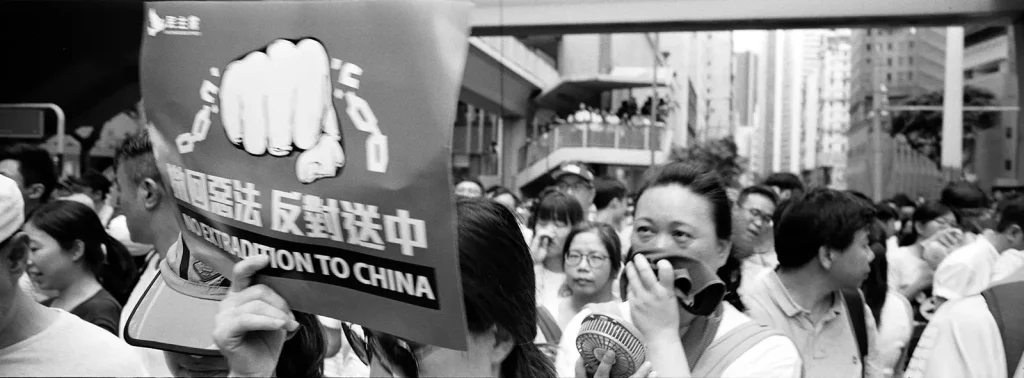
I have shot plenty of protests in Hong Kong before, but this one felt different. In the buildup, organizers had asked everyone to wear white, and you could see people in white heading to the protest from every corner of Hong Kong. The turnout was diverse too – young and old, local and expat, men and women, rich and poor, families and individuals – people from all walks of life gave up their Sunday afternoon to demonstrate. The crowd was so large that police told the organizers to start the protest an hour earlier than scheduled. A sea of people filled multiple lanes of road and stretched 6km across the heart of the city. From 2pm to midnight, protesters continued to march peacefully toward government offices.
Naturally, I grabbed a couple of cameras and went to photograph the protest. I needed to shoot fast, so I chose two cameras with aperture priority: my Konica Hexar RF with Zeiss ZM 35mm f2.8 C Biogon, and my Hasselblad XPan.
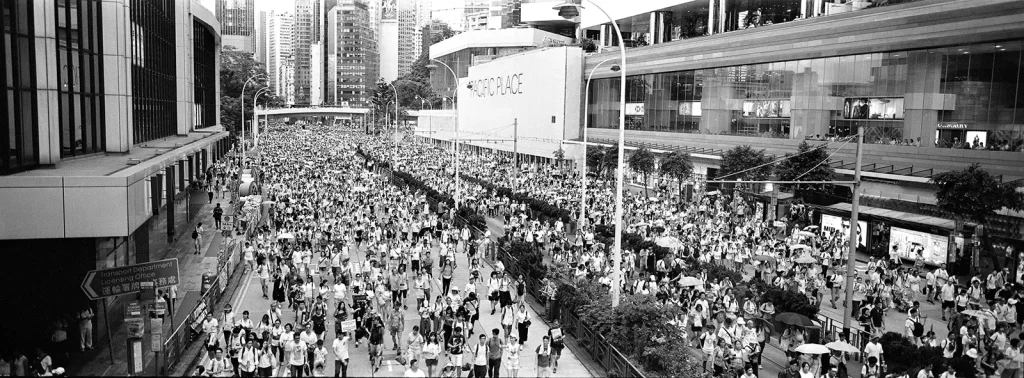
On episode 71 of the Classic Lenses Podcast, we discuss protest photography and my experience shooting Sunday’s protest in more detail, but sharing my thoughts on this experience works even better in a visual medium than in audio.
Curation – Storytelling and Composition
One moment from the protest resonated particularly strongly with me. We were nearing the end of the march, and all of the protesters were stood in front of the Legislative Council building. In a show of defiance, all of the protesters crossed their arms above their heads in the now-universal X symbol. I felt a surge of emotion and solidarity that I just don’t feel in my day-to-day photography, and turned around to photograph the moment. Since I’m no taller than average, I had to raise my camera above my head, zone focus, and trust my familiarity with a 35mm lens to feel the image I was framing. Yes, a digital camera with a tilty-flippy screen would have made framing easier, but I love rangefinders and they are my tool of choice.
I shot about five frames from this angle. In the end, it came down to two candidate images:
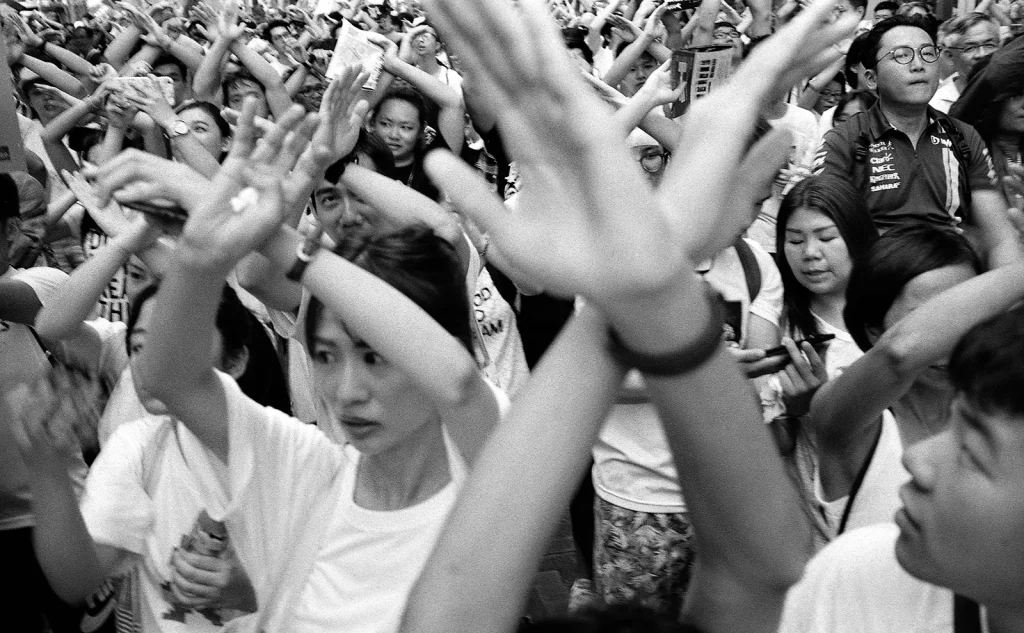
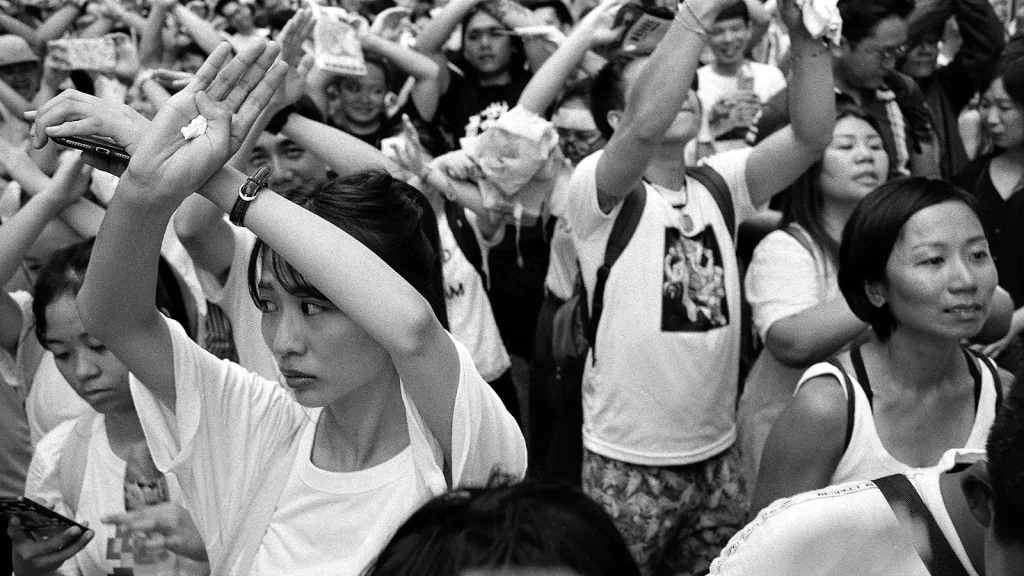
I ended up choosing the first photo. Yes, the main subject – the woman in the foreground – is out of focus compared to the second image. However the photo I wanted isn’t about her. It’s not a portrait. The story and emotion I wanted to convey was more about the scale and vibe of the protest as a whole, and a sense of being part of something larger than yourself, rather than highlighting one individual’s expression.
Additionally, it adheres to two compositional principles that I find make for compelling photos.
First, The Diagonal Method, where important elements of the photo fall along the diagonals. I find this principle generally more compelling than the rule of thirds, because it works for all aspect ratios, including 1:1 and the XPan’s wonderful 65:24 ratio.
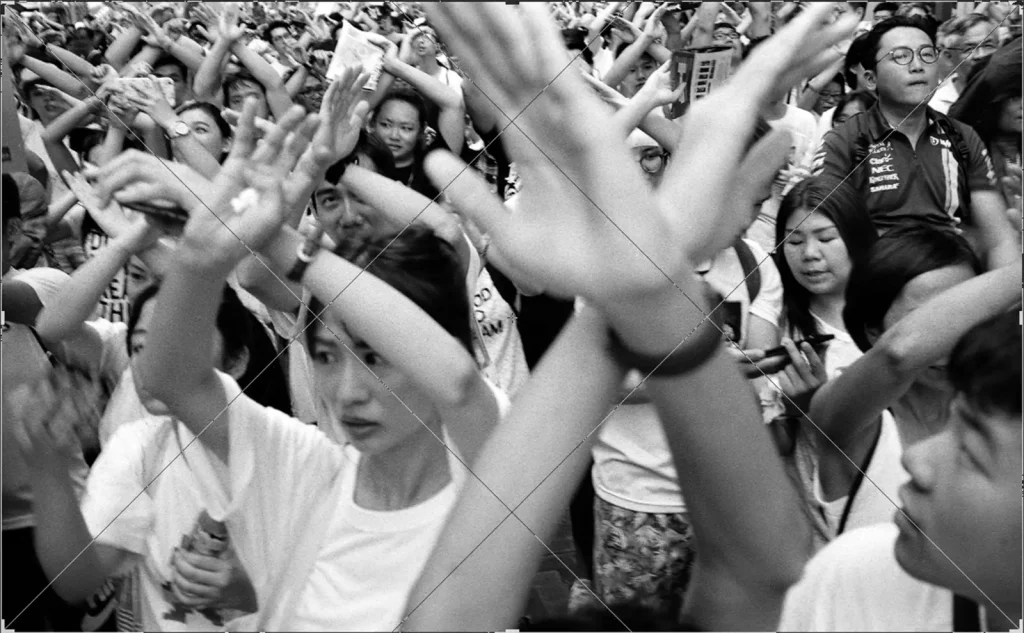
Second, it roughly adheres to The Golden Ratio, a mathematical ratio that yields aesthetically pleasing proportions and found in everything from nature to Renaissance art.
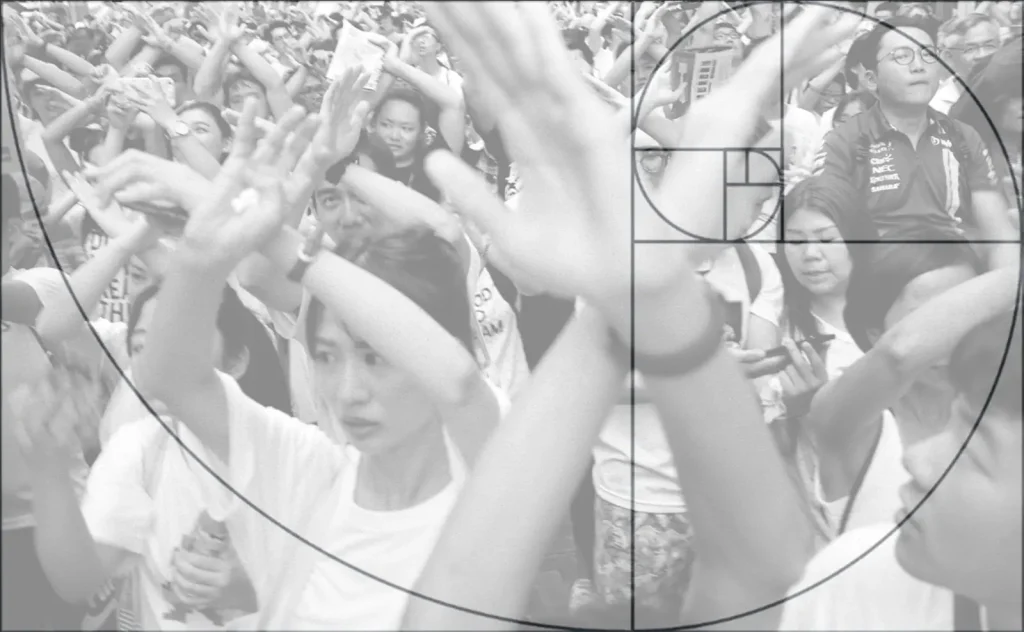
Most importantly, I felt that different elements of the image guided your eye in natural ways. I think you’re initially drawn to the woman, because we gravitate towards faces. So the fact that she’s a little out of focus doesn’t matter. The guy with glasses on the right is perfectly in focus and unobscured by arms, and the focal point draws you to him. In addition, the face on the bottom right is looking towards the large, blurry crossed arms in the foreground, guiding your eye towards that part of the composition and into the crowd behind. To me, that’s what makes this image and completes the composition. It tells the story I wanted to tell and conveys the emotion I wanted to convey.
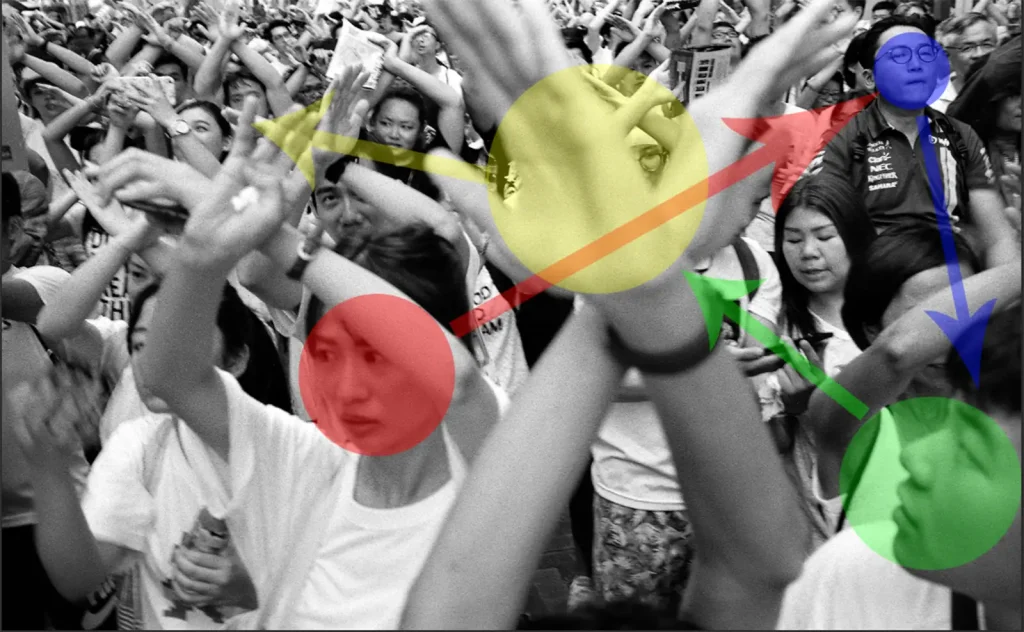
In contrast, the photo I didn’t choose has a large area of dead space that I feel adds little to the composition. My eye locks on the woman and isn’t really encouraged to move around.
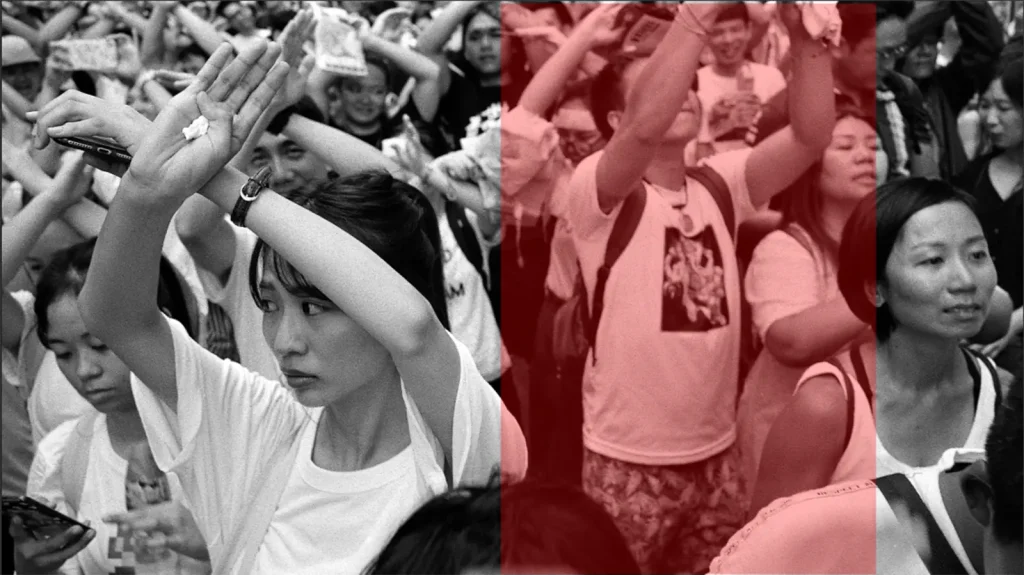
I went back to shoot a second protest on Wednesday, June 12th, 2019. But that one had a different vibe. The crowd were largely masked because it was not an officially sanctioned protest, and much less happy about being photographed. Things got ugly fast, with the police firing tear gas and rubber bullets upon protesters. I left before the tear gas came out, because I didn’t fancy getting teargassed that day, thank you very much. The real photographic heroes are the photojournalists who stayed and braved tear gas to share images with the world. Hopefully the situation improves.
Below are some more photos from the June 9th protest. Panoramas shot on my Hasselblad XPan and 45mm f4 lens with Kodak Tri-X and Rollei RPX 400. Non-Panoramas shot on my Konica Hexar RF and Zeiss ZM C Biogon 35mm f2.8 with Kentmere 400. All film developed in HC 110 dilution B and scanned with my Epson v700.
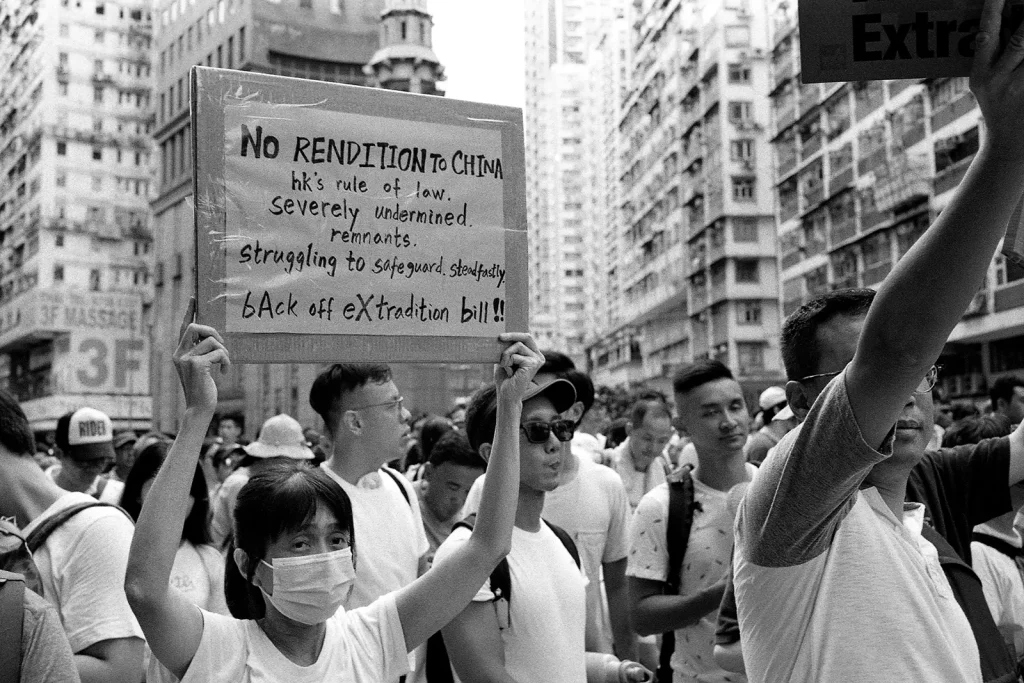
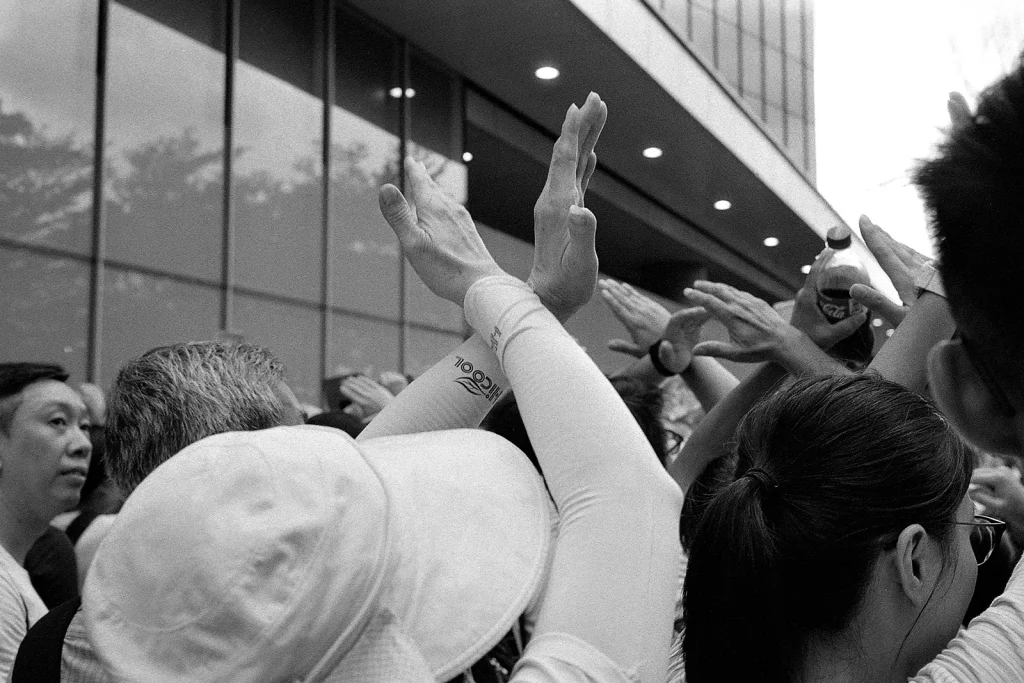
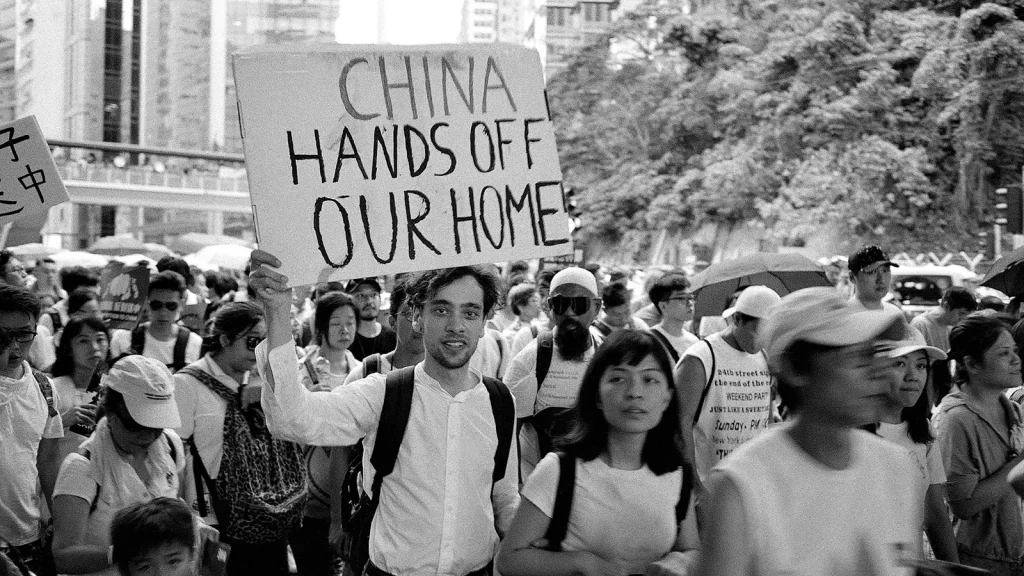
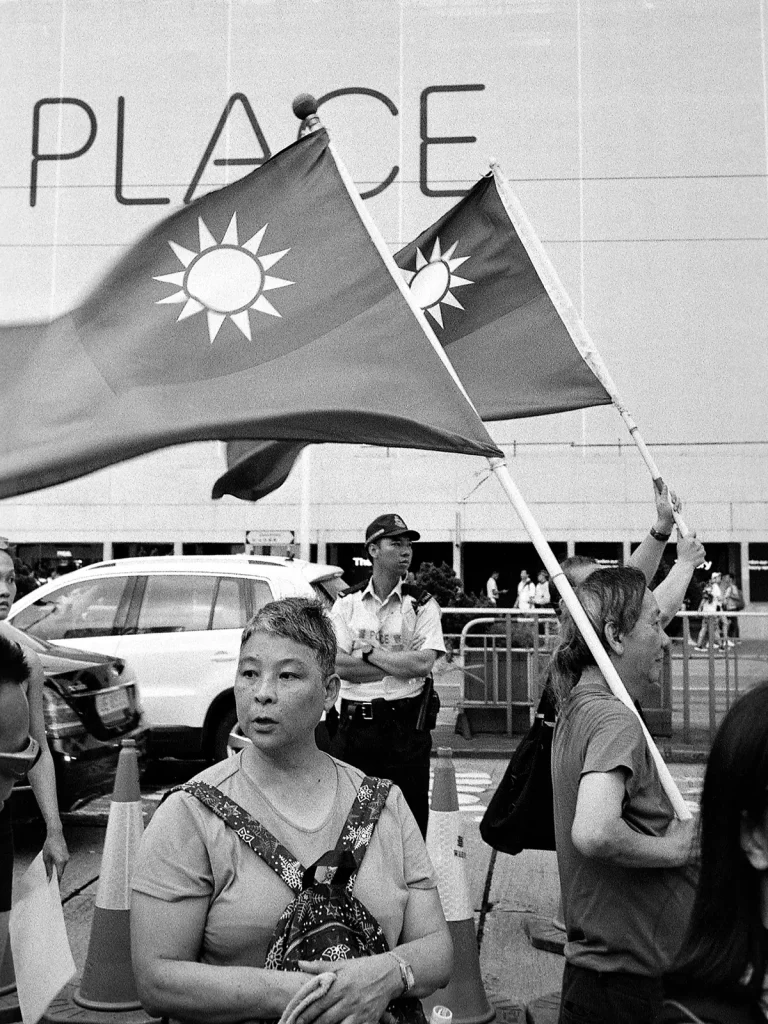
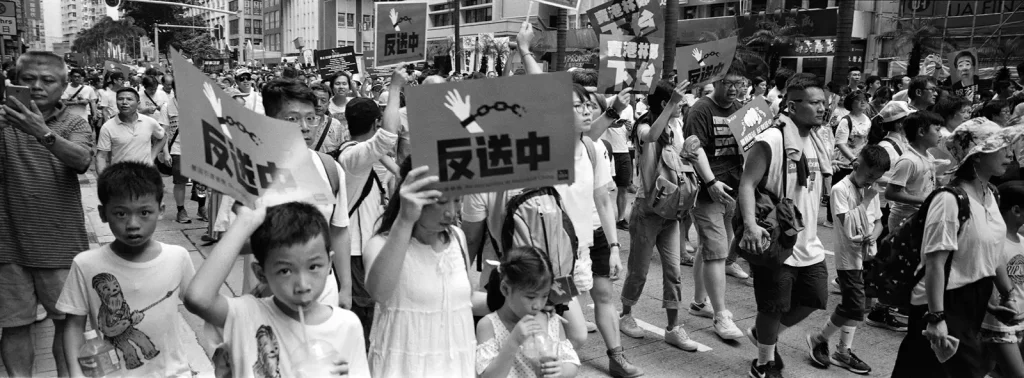
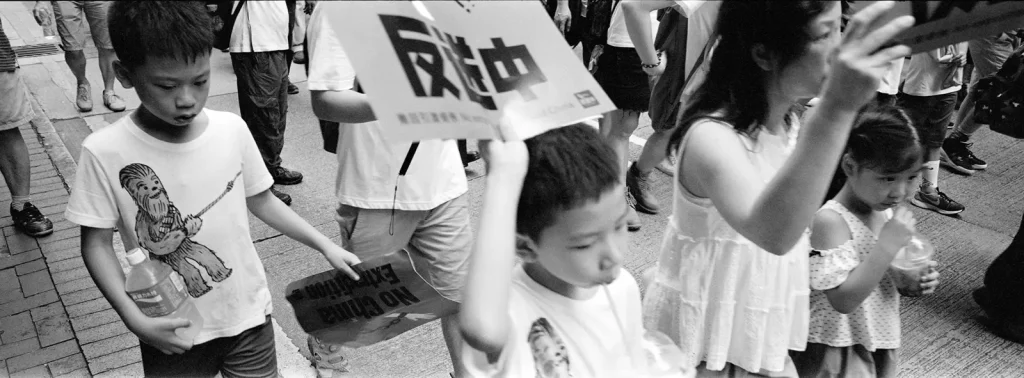
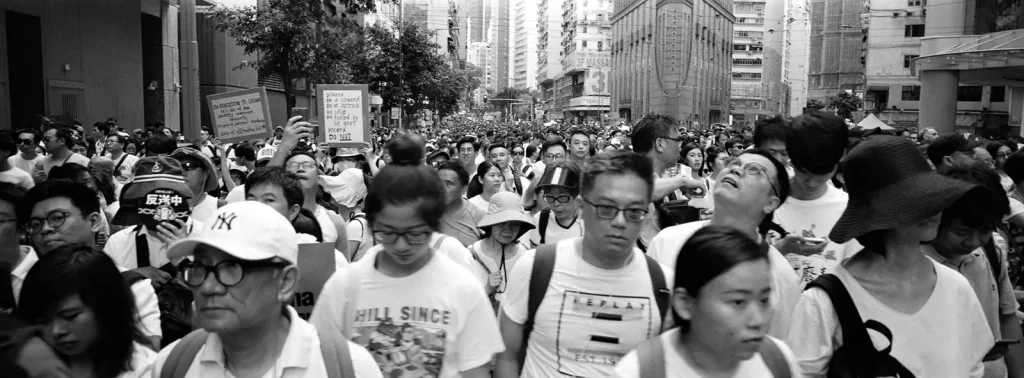
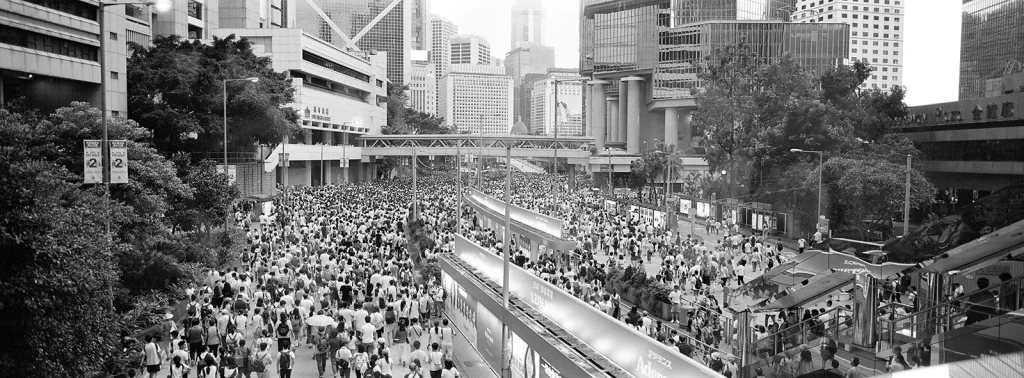
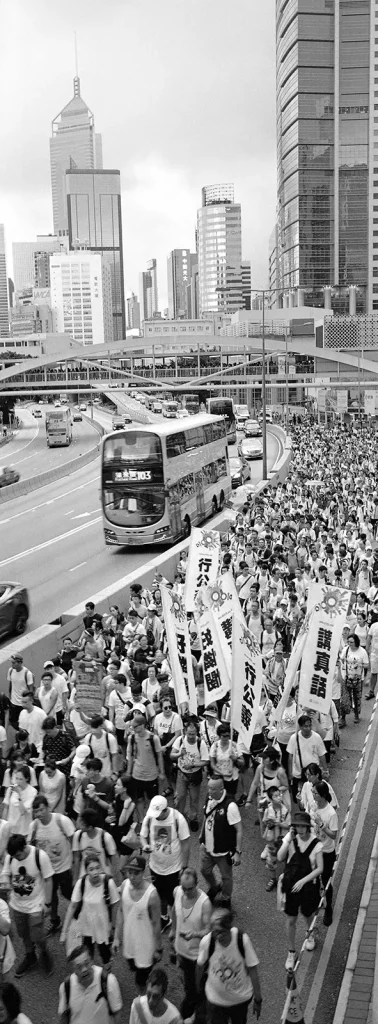
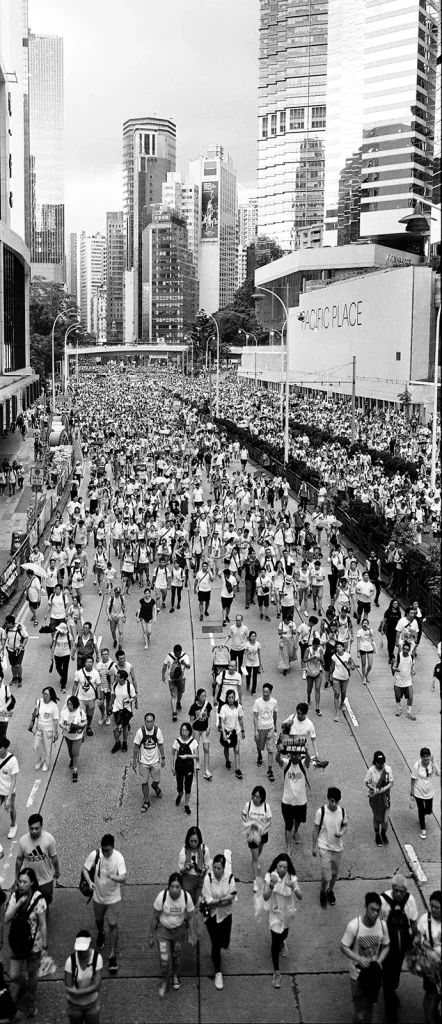
Perry Ge is a Canadian photographer living in Hong Kong with an unhealthy rangefinder obsession. He is also a co-host of the Classic Lenses Podcast.
Website
Flickr
Instagram
Share this post:
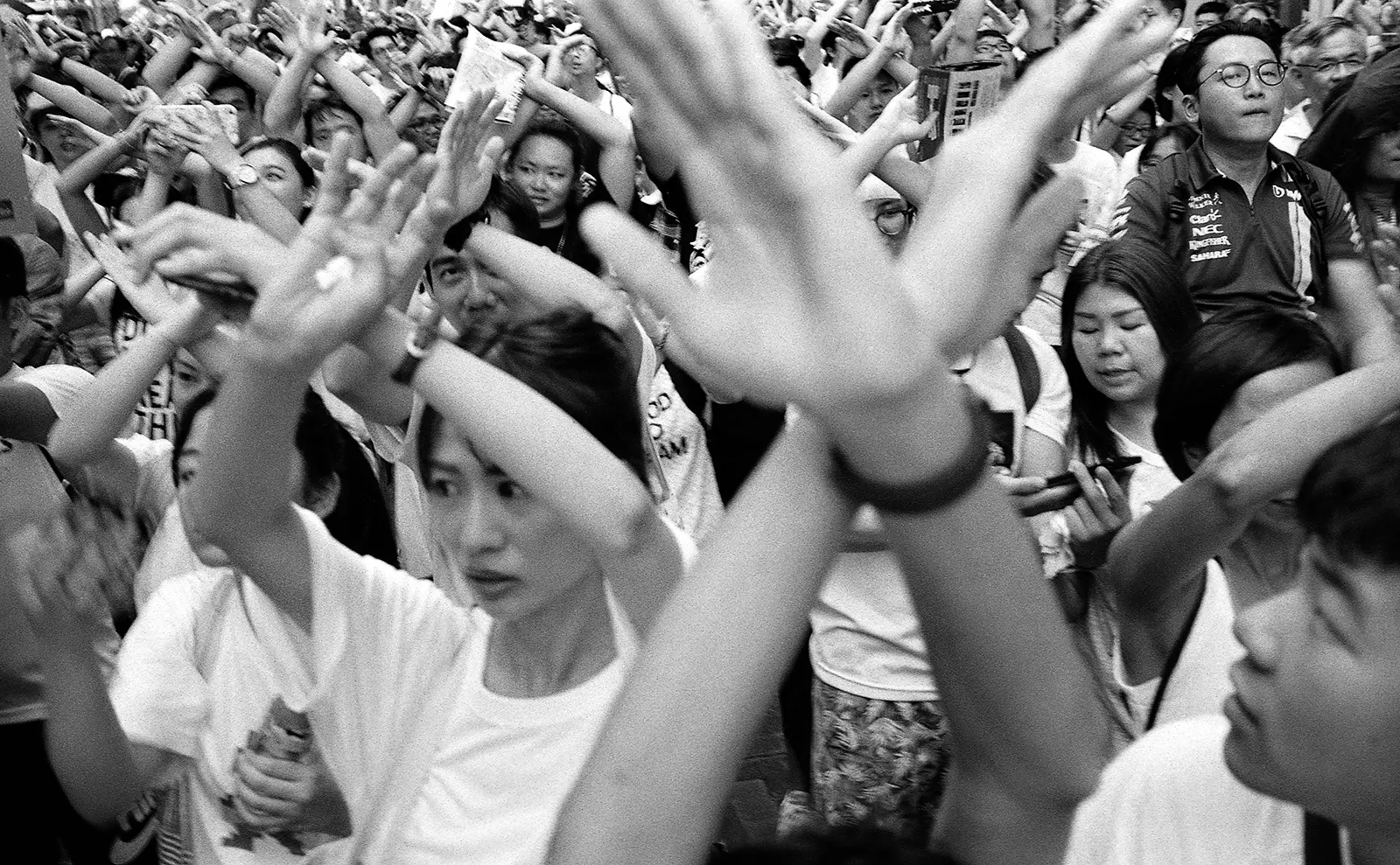








Comments
George Appletree on Protest Photography – Composing and Shooting Hong Kong’s Mass Protests with a Konica Hexar RF and XPan
Comment posted: 14/06/2019
I owned a Hasselblad Xpan for nearly 20 years. A great (also big) camera with a great lens. Finally it became kinda fashionable, and I read about its "cinematic" properties.
I sold it. Perhaps reading Hamish posts (...) convinced me that more handy cameras give you more freedom.
I don't think photography is cinematic.
I agree about the choice. But there's another reason. In the discarded photograph, the viewer is addressed outside through glances.
Also, the chosen image nearly follows the 4 thirds rule: the inside arms area and the opposite woman are nearly at the crossing points. Certainly better anyhow.
I have seen many of those compositional dissections, and for me that is too rational, perhaps I mentioned this sentence before: analysing humour is like dissecting a frog; both die in the process.
Cyclimse on Protest Photography – Composing and Shooting Hong Kong’s Mass Protests with a Konica Hexar RF and XPan
Comment posted: 14/06/2019
The first picture of this article is definitly a keeper, well done.
Malcolm Myers on Protest Photography – Composing and Shooting Hong Kong’s Mass Protests with a Konica Hexar RF and XPan
Comment posted: 14/06/2019
Comment posted: 14/06/2019
Louis A. Sousa on Protest Photography – Composing and Shooting Hong Kong’s Mass Protests with a Konica Hexar RF and XPan
Comment posted: 14/06/2019
Joseph L Rockne on Protest Photography – Composing and Shooting Hong Kong’s Mass Protests with a Konica Hexar RF and XPan
Comment posted: 15/06/2019
The photographic record is important.
Wildly Insecure on Protest Photography – Composing and Shooting Hong Kong’s Mass Protests with a Konica Hexar RF and XPan
Comment posted: 15/06/2019